Right at the end of COP 26 Summit, the launch of the Lensfayre Snap LF-35M might at first appear to be a bit late to the party. The plastic simple camera market has mushroomed since the launch of the Kodak M35 and the Dubblefilm Show. But unlike its rivals this isn’t a mere clone and bring some serious Eco cred to the market place.

LensFayre got in touch in early September and asked if I wanted to try out a pre-production sample of their camera. I’m always happy to get a freebie but I did wonder if this would be just yet another clone of the Dubblefilm or Kodak.
Turns out it isn’t and actually this camera brings a few new tricks to the game.
LensFayre ?
I’ll confess until they got in touch I’d not heard of them either. But this Nottingham based company set up just a last year sells second hand cameras on the likes of Depop and Etsy. It’s the brain child of Alecia and Dan – 2 creatives whom are better known for their work elsewhere. Dan is a professional photog with a history of working with various News outlets and publications such as Time and Wired and you probably have seen his montage image of gloves during the pandemic in likes of National Geographic and BBC News Online.
They kindly sent me the pre-production model of the camera with the battery and a single roll of film (along with some sweets that my kids nicked in seconds), but beyond that they’ve not interfered. I’ve used (and pay for) my own usual lab AG Photolab for the D&P and scanning. LenFayre have seen this post and haven’t asked for any tweaks other than confirming the price and they’ve had no editorial control.
All images taken on the camera are shown as scanned by AG Photo.
Entering a Crowded Field
If Alecia had got in touch in 2019 the market would have been ripe for the taking. The focus was on reloadable disposables back then for new lo-fi cameras. But they are a pain in the proverbial to load and suffer a bit for it. The game changed in September 2019 with the Asian launch of Sino promise’s Kodak M35. I confess at the time I ignored this. It looked like a colourful version of the Harman reloadable which whilst having a good lens (a precursor of the simple use cameras to come) had a truly awful loading mechanism even by reloadable standards.
But the M35 had a more standard reloading system and the same lens and was the first new generation of simple use cameras. The idea of a cheap plastic film camera with a fixed lens and settings wasn’t new. Haking (aka Halina), Vivitar, Concord, Haminex et al did very well with similar cameras from the 80’s on. But this was the first model to appear in years and trigger the boom during 2020 and 2021.
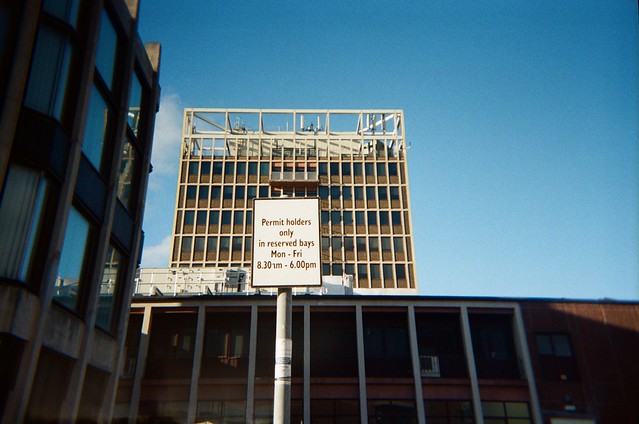
The Dubblefilm Show perhaps epitomises the class and indeed most of the models that have followed are the same camera made by the same Chinese company with just a different badge and subtle styling differences. So you now have models from Ilford, Agfaphoto and a range of new or no brand cameras that are identical. Only the Kodak M35 and the later M38 differ in appearance but that’s just superficial styling,
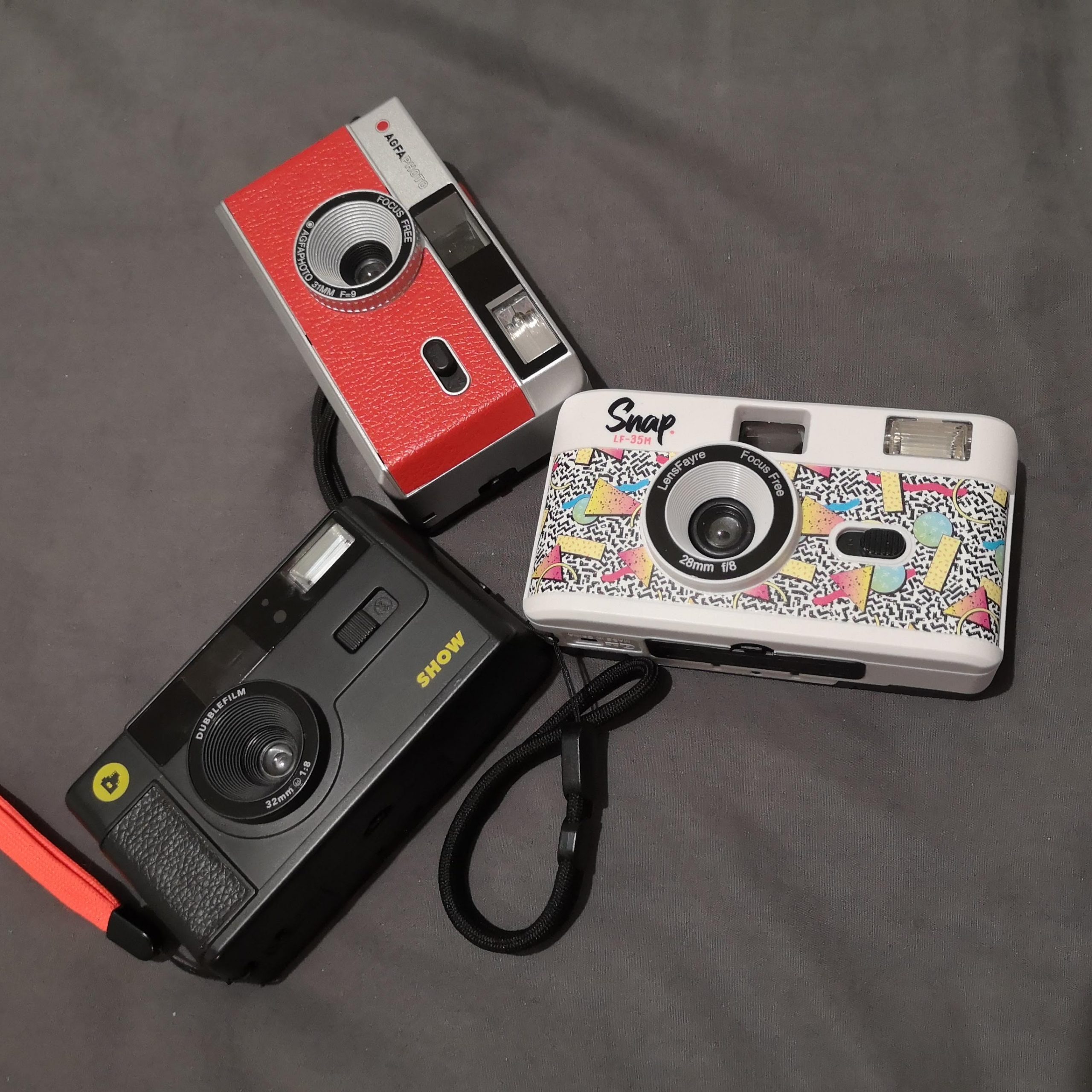
So it’s a crowded market already. But lensFayre isn’t made in the same factory and it has a few tricks up it’s sleeve
Styling of the Lensfayre LF-35M
Although at first glance this appears to be a Dubblefilm Show clone made with a white body plastic frontage. But there’s a more going on.
The camera will be available with a range of body stickers. Two will be supplied in each retail pack from a choice of ten at launch. and you’ll be able to buy packs if you want afterwards.
But look beyond the front styling and you’ll see the at this is subtly different. The fixed focus 1 element plastic lens is notably wider than rivals at 28mm. Unlike it’s rivals aperture does not alter with turning on the flash. It stays fixed at f/8 married to a 1/120 shutter. That’s wider than it’s rivals which shoot nearer f/11. The camera also uses AA batteries to power it’s manually triggered flash compared to the AAA used in the Dubblefilm et al.
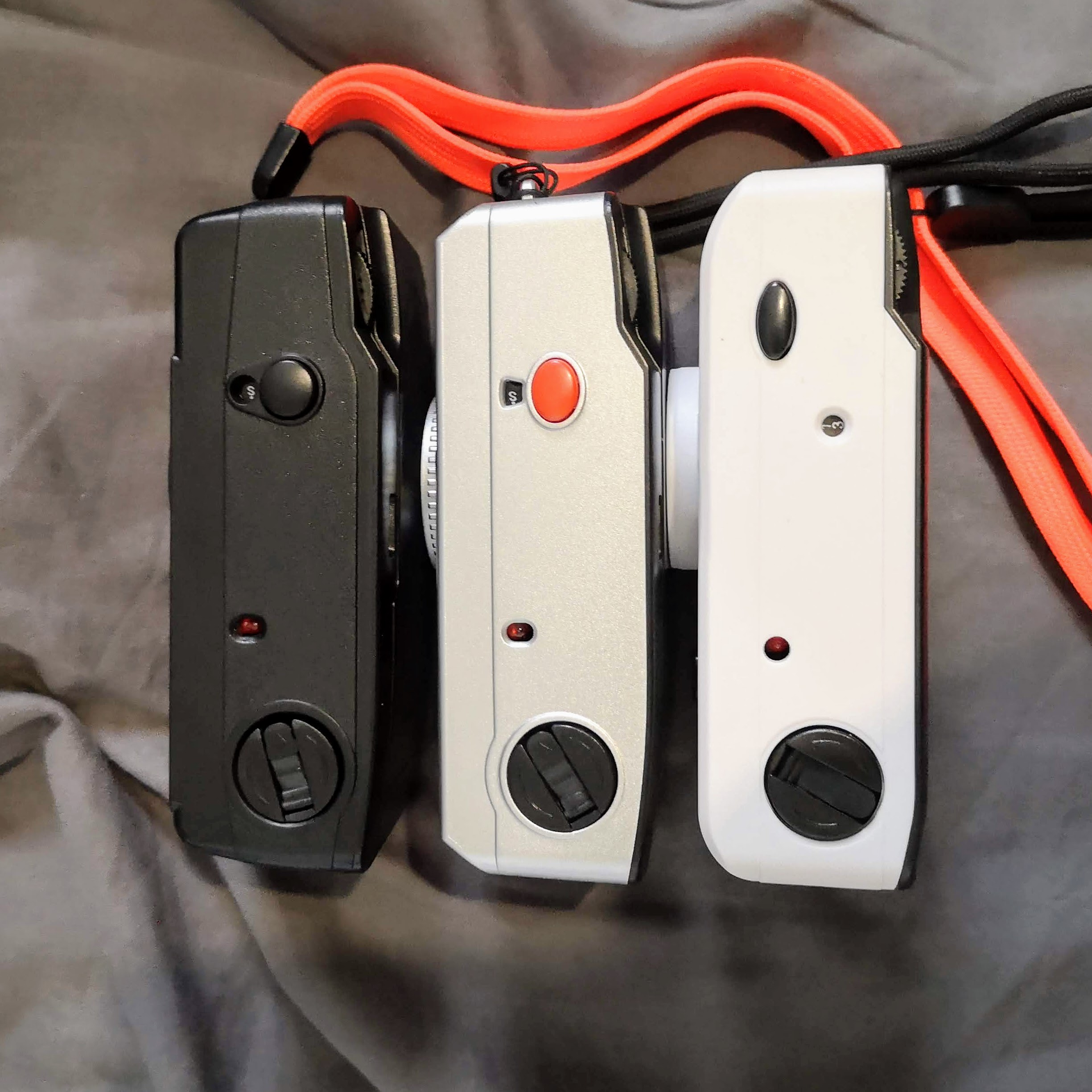
Although the camera has a curved film plane like it’s rivals, there are obvious differences. Notably the top plate is subtly different and as is the rear door. The film compartment is also different in construction with a rounded internal aperture.
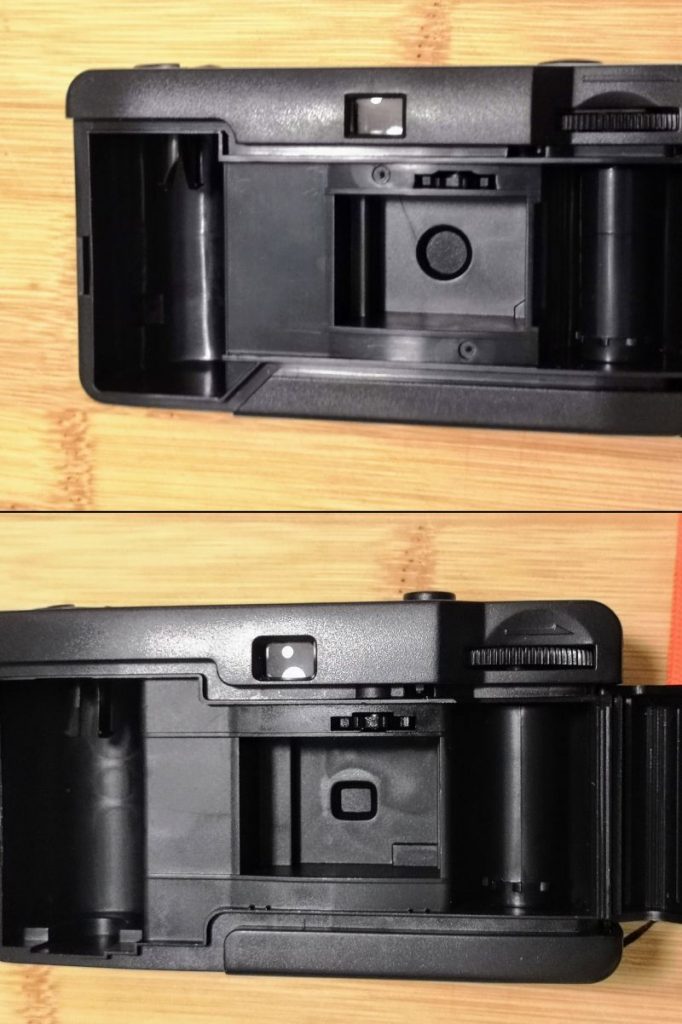
But more important is what it’s made from.
Green Shoot(er)

This is yet another cheap plastic camera. It will not last I here you say. But this camera is about as environmentally friendly as you can get for a lump of plastic. Now you might say “well having a nice recycled card box with no plastic coating and the compostable plastic alternative hygiene sleeve that camera comes in is all very good. But it is still plastic.”
Turns out they thought of that.
So yes it’s plastic but this is ABS plastic which is highly recyclable and has better toxic & pollution profile than others. Oh and LensFayre will also happily take your camera when it dies and get it recycled.
And in the month of COP 26 they’ve gone further than most countries promising to plant a tree for each camera sold and donate some of the profits to reforestation. No Blah Blah Blah here,
This makes it much greener than the rivals and to be frank anything else on the market.

In Use
Not much to say here. This is standard modern easy loading with you just needing to pull leader over the toothed wide take up drum and ensure winding on.
Shutter is cocked by the film counter sprocket that sits above the frame box. This obviously prevents double exposure both intentionally and accidentally. LensFayre suggest it’s good for subjects at least 1.2m away
To rewind you depress button on base and use standard rewind spool.
To turn on the flash you slide a switch on the front. It benefits from the bigger battery in terms of longevity and seems to charge quicker than rivals. The demo model I had tended to flash on the next shot even if turned off – it’s an issue that LensFayre have already identified and should be sorted on the release models. I found if I charged the flash then turned off before taking a flash shot, it would still trigger but ususally wouldn’t happen next time out.
I ran 3 rolls through this. It was happy with the two 36 exposure rolls I used unlike some current plastic cameras (Superheadz wide and slim I’m looking at you !).
Results
The use of f/8 for it’s fixed aperture is interestingly. All the rival cameras have a wider flash aperture of f/8 but tend to use a aperture of f/10-11 without. On paper this gives them a wider Depth of Field (DoF) but at the expense of letting less light in and potentially more diffraction.
But this lens is wider and if the lens focal point is set to around 3.3m then the camera should have acceptable focus from about 1.6m to infinity.
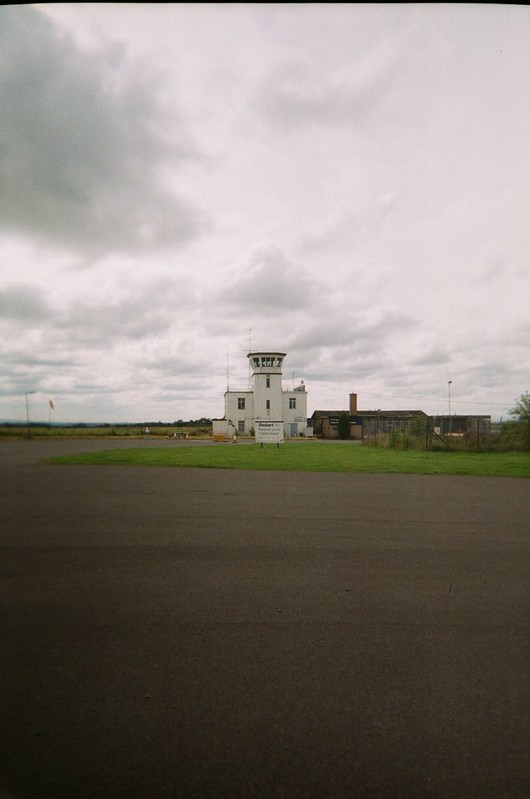
And it does the goods from an exposure point of view. With a typical good consumer 400 ISO film like Kodak Ultramax you can usually expect around 2-3 stops of overexposure and 1-2 of under meaning this camera will tolerate well the equivalent of EV100 range of 10-14 which pretty much covers most outdoor daytime shooting in the UK. In brighter climes you might wanna load a 200 or 100 ISO film if you truly can get EV100 15. I loaded the camera with some slightly expired C200 and the weather dipped a bit (typical 🙄) . But it still gave good exposure.
-Lens Performance
That core spec helps this camera turn is a not bad performance for a plastic lens.
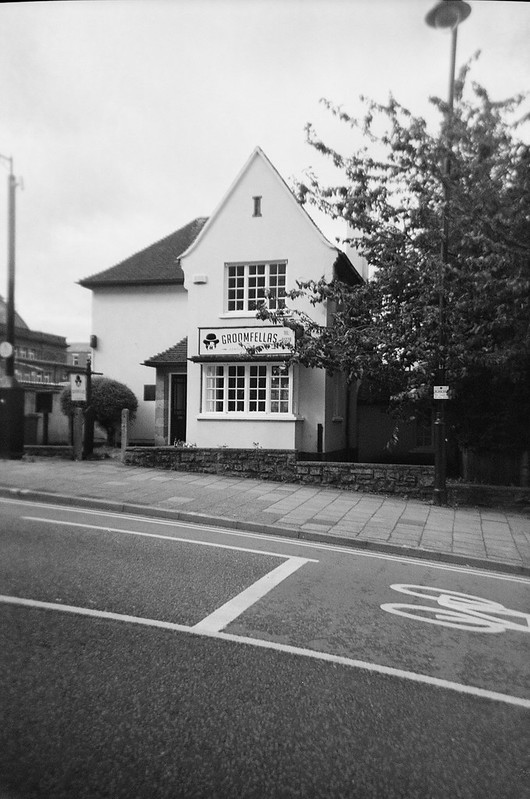
On paper a 28mm 1:8 lens if focus is set to the hyperfocal distance (just under 3.3 m) will have an acceptable focus field from 1.65m to infinity. Of course that calculation is intended to be used with a bit more fancy lens which doesn’t have a curved film plane.

That said it does pretty reasonably on the centrally. It really isn’t to bad here. Focus remains good enough here to at least 30-50m then softens off a little. For close shooting it’s good enough to 1.5-2m but softens beyond that. It’s no VUWS or Goko UF but this is as good as its rivals.
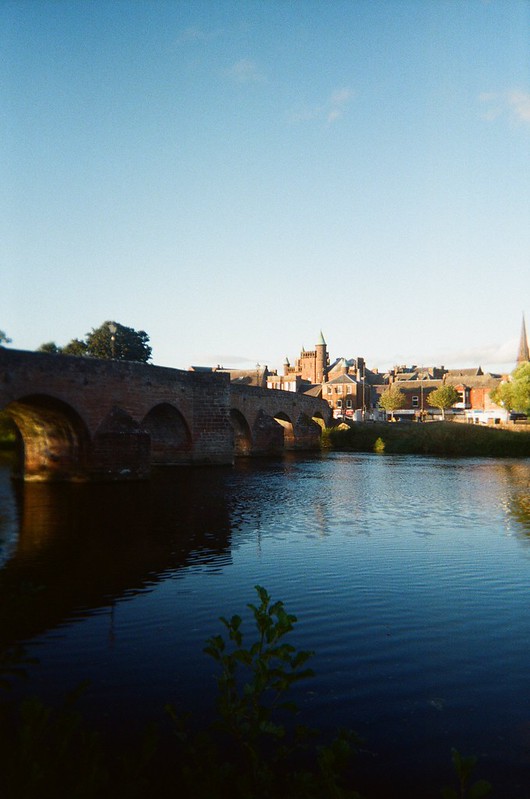
Off centre things are notably softer and get worse the closer to the edge. But it does as well as its rivals. There are also some radial (pincushion) and chromatic distortions which worsen towards the edges. But again about average for the group. These give a that lo-fi look so there’s enough to keep your inner Lomographer happy.
-Flash & Viewfinder
Flash is okay for what this is. My gut feeling is this illuminates a bit brighter than some of the rivals and certainly flash images with subject around 2 m came out pretty well.
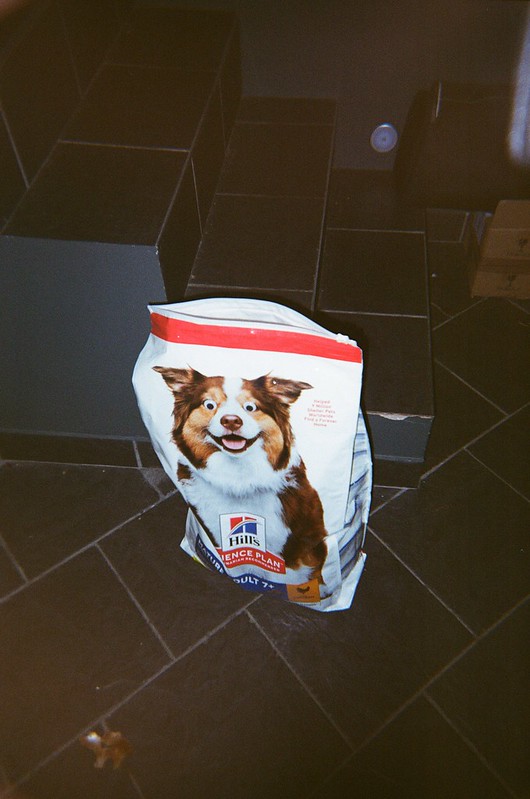
The Viewfinder gives a much smaller view than the final image. LensFayre suggest about 70% coverage but i think it’s less as the image below shows. This isn’t untypical and all the cameras in the class have the same issue. I’m guessing they have similar set up but it’s that bit more obvious with the wider lens. It is reasonably central
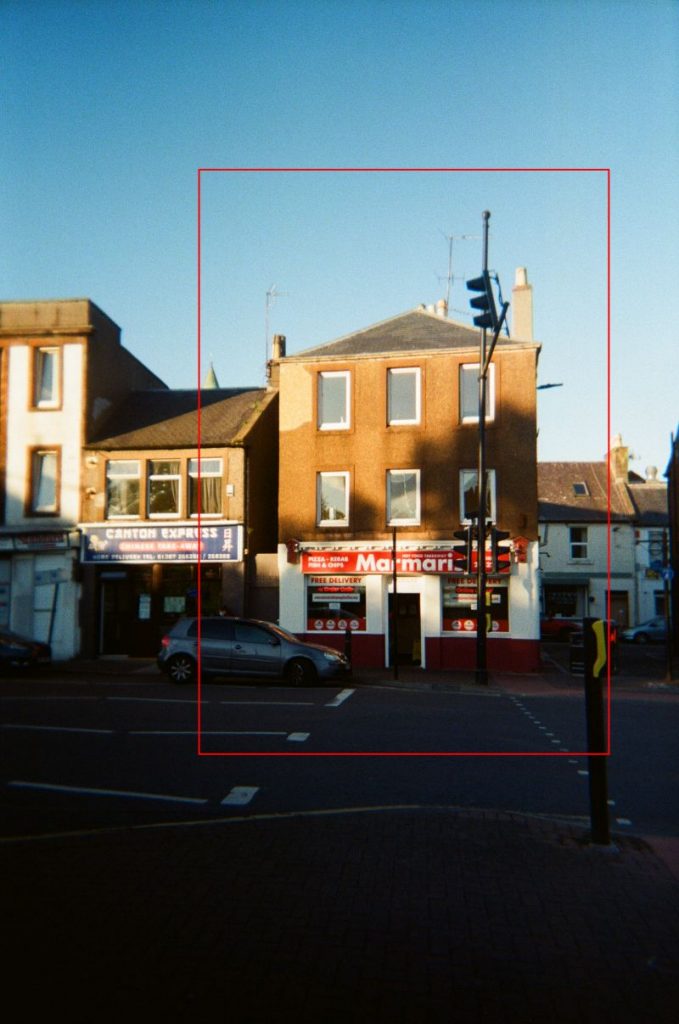
Cost and the Rivals
LensFayre are launching this at £38 on their site. This is around the middle of the pricing of its rivals. About the same as the Vibe 501F but cheaper than both the Dubblefilm Show and Ilford Sprite 35 II. You can of course buy the Agfaphoto and Kodak M35 & M38 for cheaper. But the latter are ugly and none offer the green credentials and customisation of the LensFayre.
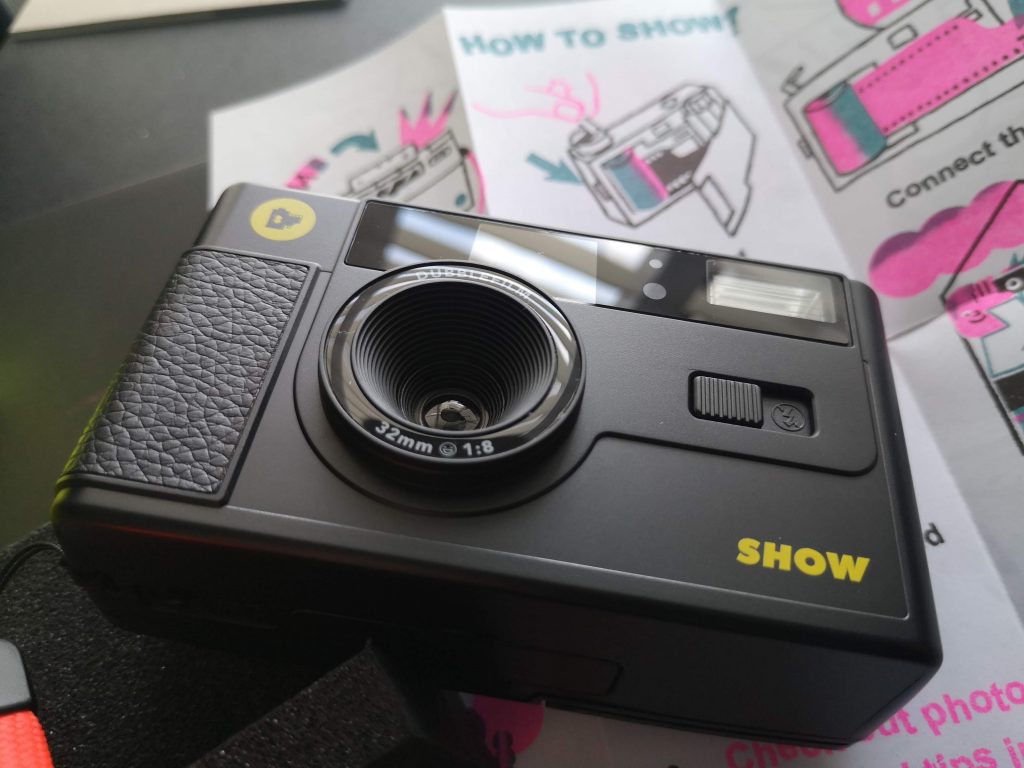
It comes with a standard wrist loop but you’ll need your own battery and film just like its rivals.
For those of you moaning this should cost of these things overall just think on this. Thirty years ago Argos would sell you a Goldline Classic camera for £14.99. That has similar specs but was produced by a massive company (Concord Inc) in its thousands. That would equate to ~£34GBP today with no green credentials.
Suddenly doesn’t sound quite as expensive
Final Thoughts on the Lensfayre Snap LF-35M
You can probably guess I think this is good for what it is. On one hand it joins an existing class of plastic cameras and brings nothing new to the class optically bar a slightly wider lens. But it holds its ground against its rivals. It also does have big Eco cred advantages over its rivals. That’s before we get to customisation and enhanced flash.
And we need new cameras like this. Yes they’re not rivalling the classics of old. This is no Olympus Trip 35 or Contax G. But they do show that making analogue cameras is not dead. Popular photography did not begin with the Leica U or the VP Exakta. It began with the likes of a simple box called the Brownie in 1900. These serve as fun entries into the world of film photography. they bring in new people and they also shout out there is a demand for film cameras.
Will this give rise to a Nikon F7 tomorrow, nope. But it may mean we get a steam building up that will give us newer and better cameras in the years to come.
Alternatives to the Lensfayre Snap LF-35M
I’ve mentioned the modern rivals in this post already. For vintage simple use cameras several stand out. The cult classic VUWS and its clones offer one of the smallest 35mm cameras in the world but a weirdly good ultrawide plastic lens but no flash. Likewise the Goko UF is an incredible camera optically despite being a simple use. It’s hard to find and is a bit dull to look at. All the lower end and some more prestigious companies made simple use cameras back in the day. The Halina Vision XF is a typical example of the ilk but this blog is littered with them.
If you want new but cost is really an issue. If you can’t stretch to the LensFayre or its rivals there is a choice. The reloadable disposable class sits below and basically are very similar except they have that not so user friendly reload mechanism. The best in the class currently is the Lomography Simple use, which is the best in that class all round. The B&W loaded version makes sense as it’s much cheaper than the colour film versions, which are only worth if you really want the colour gel flash filters (hint quality street wrappers do the same job). The Harman reloadable has better optics (same as the Dubbblefilm clones) but is woeful to live with.


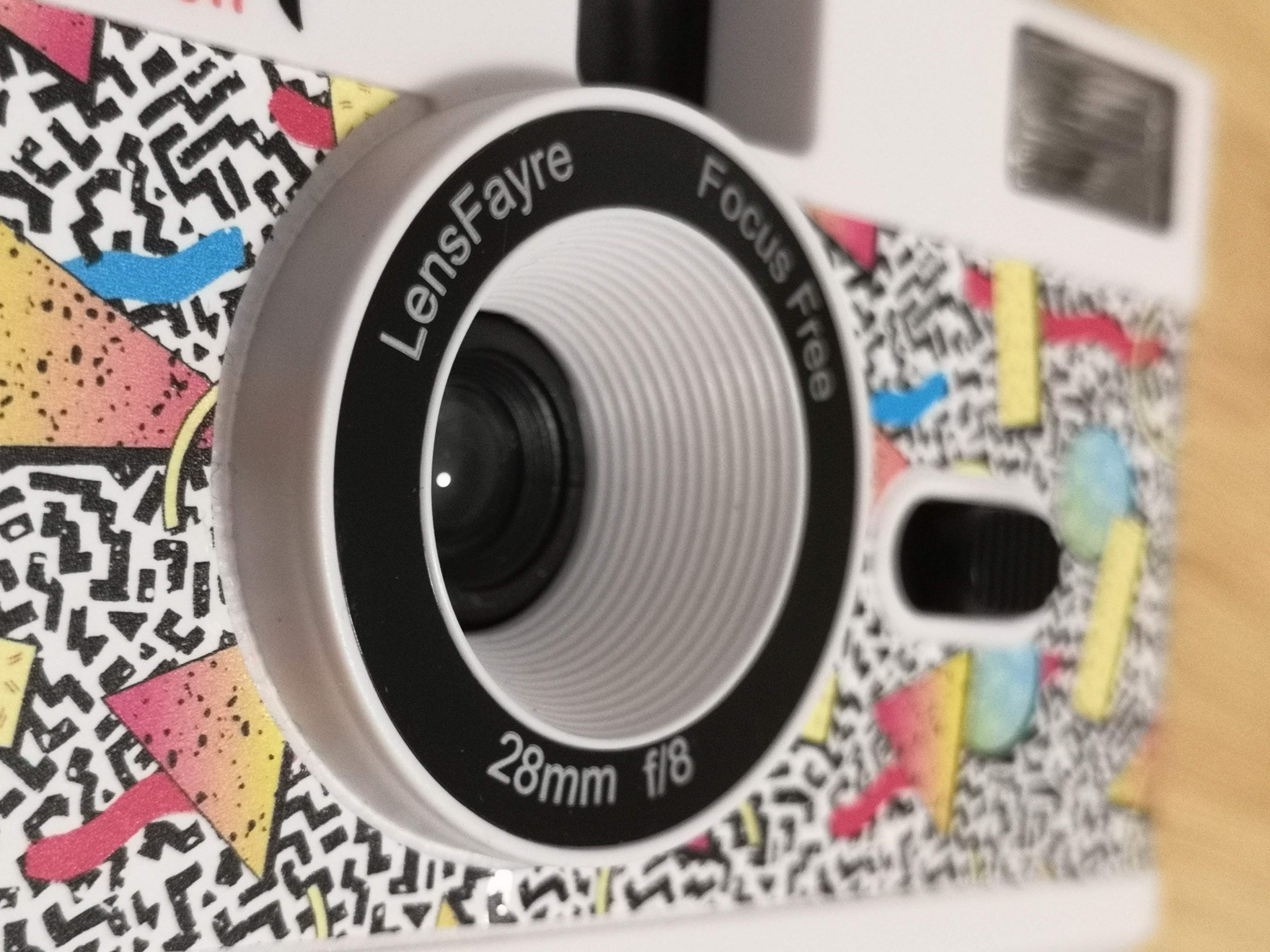


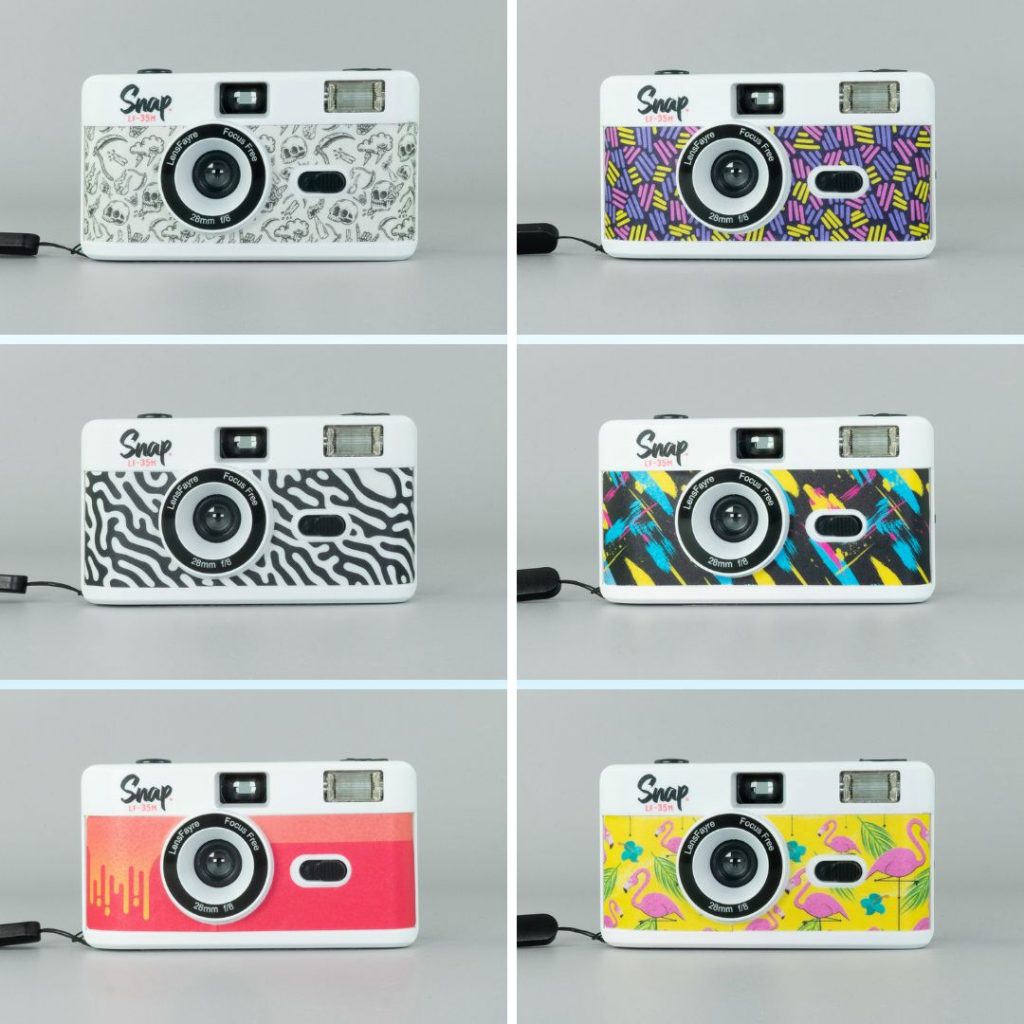
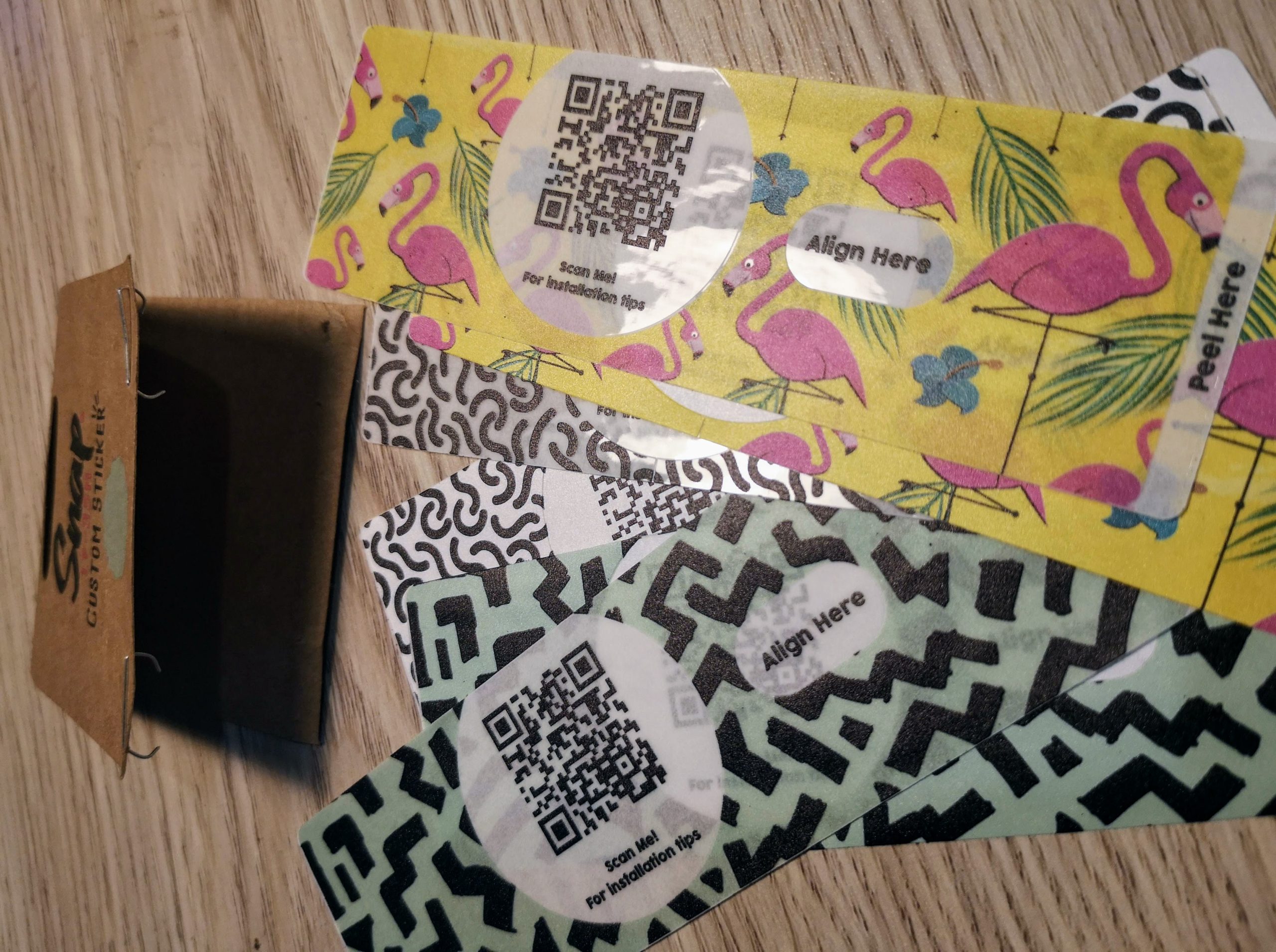
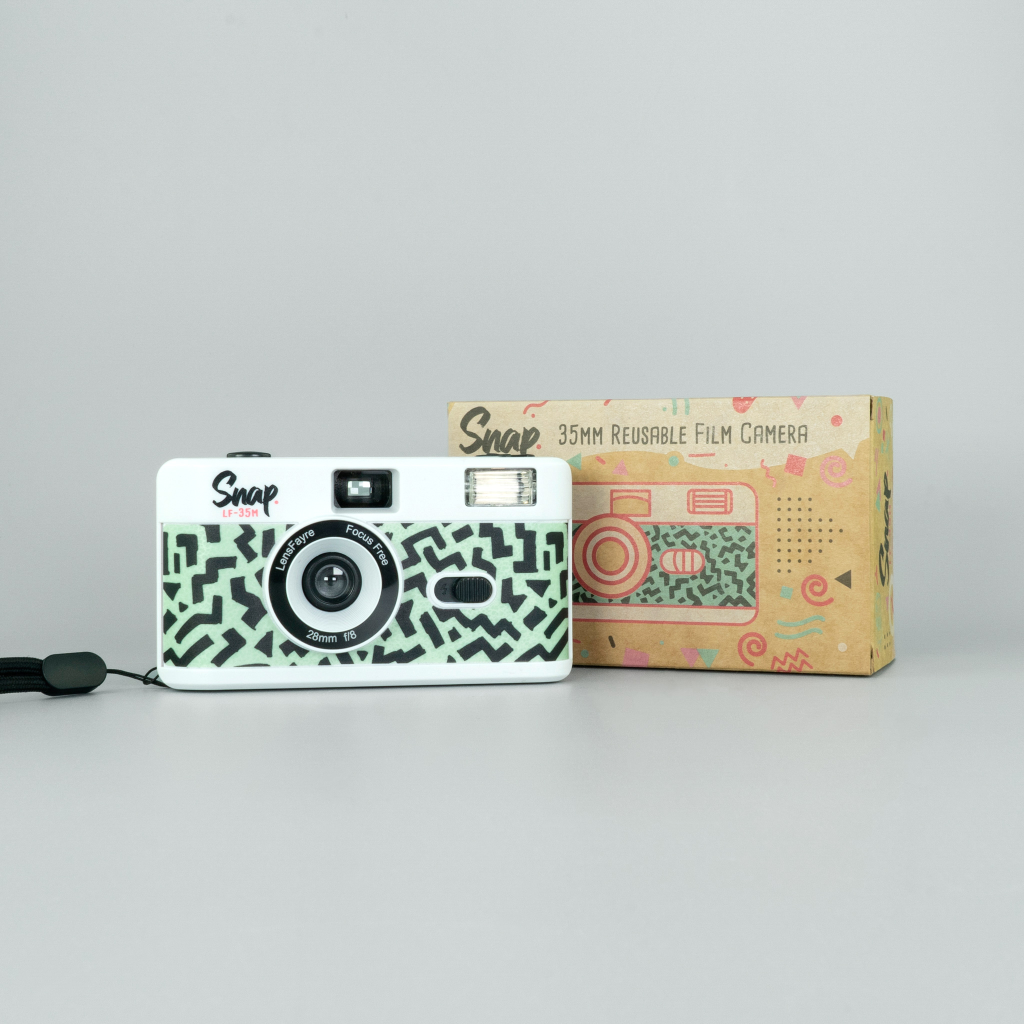


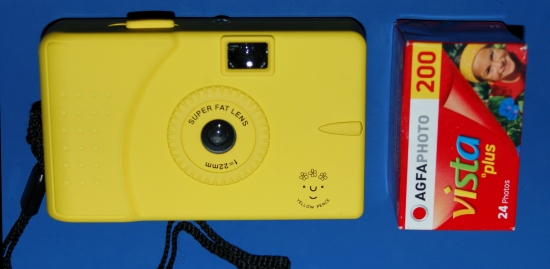
Alan, at the risk of being called a photography snob, is this the level that film photography has come to? Crappy and decidedly mediocre cameras? With no “proper” film cameras being made, and the availability of serviceable fully working used ones on the market diminishing, this doesn’t look good for film users in general, with no upgrade route for those really serious about film.
It’s one view Terry and these are basic cameras but i’d take the view that they sell and that means other folk get interested and try to up the ante. Without the evidence that you can make money even from basic cameras I doubt we’d have had incremental steps forward like the Nons SL42 SLR or the Yashica MF-2 (okay not a great camera but a notable step up technically from its plastic brethern).and we get folk encourage to try new products like the lomography LC-A 120 a seriously good medium format viewfinder
Why does the viewfinder show less than whats taken rather than more…a (first of that name) Canon G9 digital does the same with 80% coverage…..how is this better than (100*1.n) coverage? Is it cheaper, but then why would a g9 do it?
Most viewfinder on a camera sit slightly off centre so giving you 100% of what you see in the frame is impossible. So most try to give reasonable coverage Optical contraints on even throught the lens viewinders like TLRs & SLRs prevent them from giving a whole 100% image
Alan, I would also like to add that the actual field of view captured by the lens and as “seen” by the fixed optical viewfinder changes with subject distance. It’s been quite a while since I came across this, but if memory serves, at closer distances the lens actually “sees” less of the subject than the fixed magnification of the v/f, and this is to do with the magnifcation factor changing as the lens focuses closer. Although quite why many v/f cameras show as little as 80% to 85% I don’t know.
From a different perspective, it is a good practice even for slr cameras to show less than the lens will image on the film and this is to allow for the masking frames in commercial photographic printers, and indeed with the inherent masking of slide mounts.
My old Nikon F was advertised by Nikon as the only camera (at that time) that captured on film exactly what was visible in the v/f. And as I did my own d&p in b/w, and used slide film, it proved to be a more of a pain than a positive. Sighting the subject and trying to guess what imaginary border I should allow for wasn’t easy. Much better to frame with a 93% v/f image which would be closer to what I’d see in a slide.
This is a great review, thanks! I noticed that this post doesn’t have the ‘toy camera’ tag, is that an oversight or…?
Yeah that’s fir, I’ll add that
Right as ever Terry, parallax error. More expensive viewfinders have marks on their frame lines for this. That’s a good point about frame masking. that said this is pretty off – I think the quote 70% is generous but all of these suffer from it
Thanks for the replies, but surely a wider view with a white box and parallel lines, as on the the olympus trip etc would be better for fixed length film compact cameras at least? I presume these white lines might not be possible on a zoomable viewfinder, but surely more than 80% coverage would be better?
An Evf on a more modern digital compact avoids the problem but my G9 was free….. 🙂
It does seem like a lot of money, yes. You can get an awful lot more camera for that amount if you know what you’re about, but of course we already know that(isn’t that what this blog is about?) and you make a fair point about bringing folk into shooting film.
It is pretty though, and that wide lens is appealing. I think if it could be brought down to under thirty quid then it would be more appealing still.
Then again I’m old and out of touch and still manage to be gobsmacked by the amounts Lomography charge for simple plastic cameras.